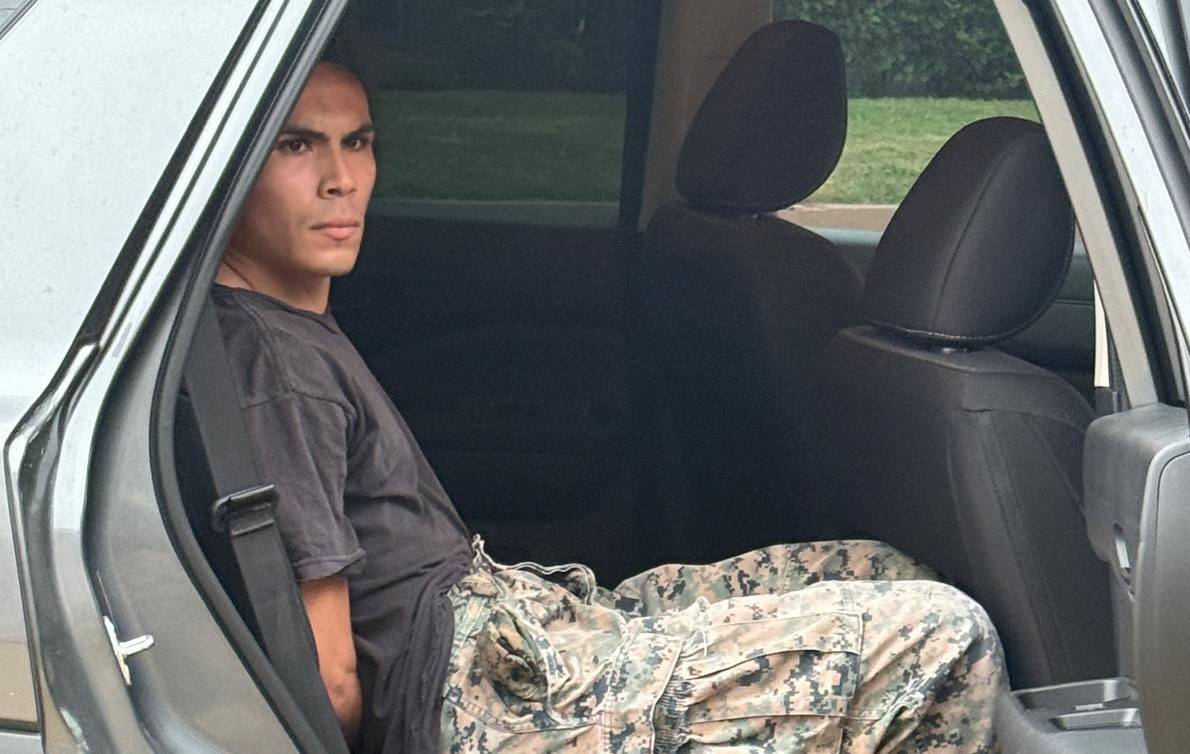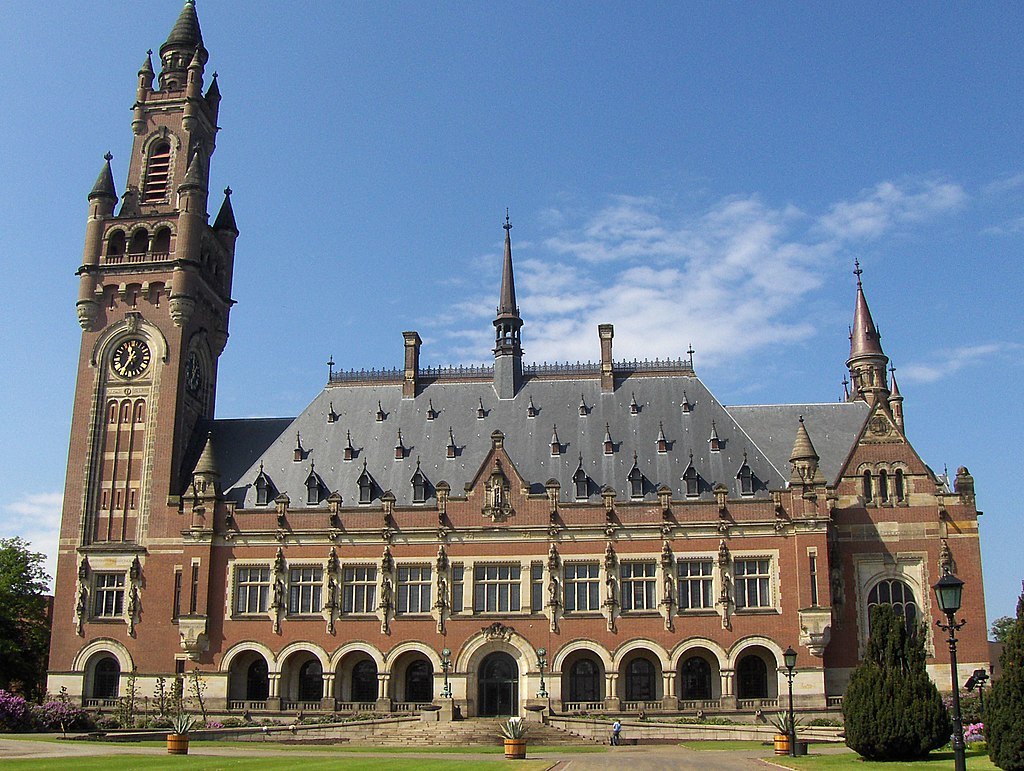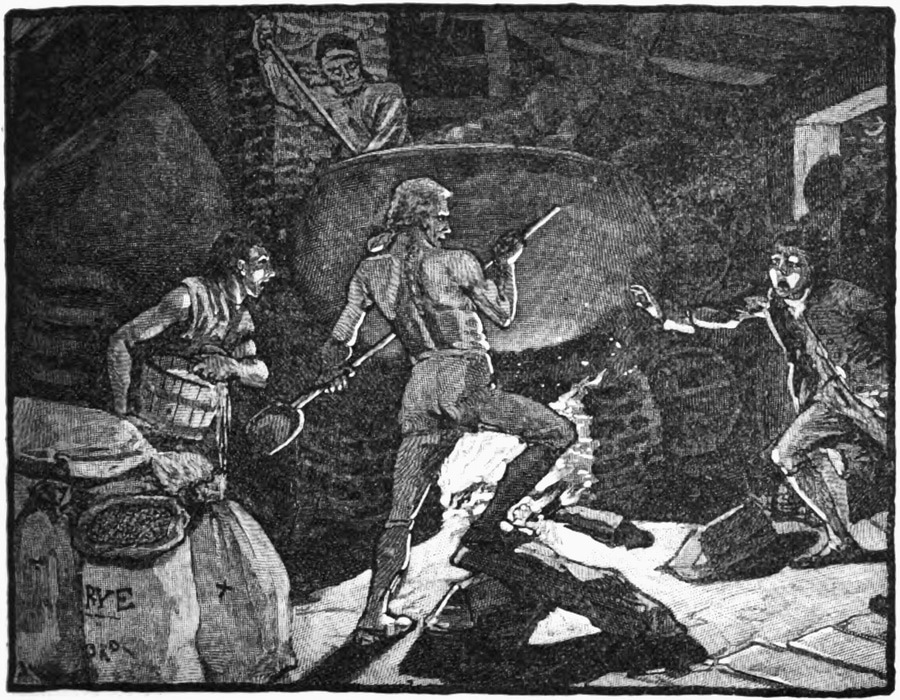Sharpening the Tools of a ‘National Injustice’

Published by The Lawfare Institute
in Cooperation With

On June 12, federal agents arrested Alejandro Orellana—an immigration rights activist—for handing out masks and face shields during a June 9 protest against Immigration and Customs Enforcement actions in East Los Angeles. Following his arrest, Orellana told reporters that “federal agents broke down my door, smashed my window, and detonated flash grenades in my home.” Orellana was later charged with conspiring to engage in civil disorder. On July 29, the Department of Justice moved to dismiss the indictment brought against Orellana. A judge dismissed the case the following day.
The Trump administration’s treatment of Los Angeles immigration protesters prompted certain comparisons to the Jan. 6, 2021, attack on the U.S. Capitol; in both instances, crowds surrounded federal buildings and some clashed with police. “Donald Trump is OK with violence, as long as it’s done in his name,” said Harry Dunn, a former U.S. Capitol Police officer who sustained injuries during the attack. Attorney General Pam Bondi, in turn, argued that the Los Angeles protests were “different” than Jan. 6 because “[t]hese are people hurting people out in Los Angeles right now.” Of course, Jan. 6 involved “people hurting people” too—an hours-long battle, in which hundreds were charged with assaulting officers, and more than 140 officers were injured.
For all the administration’s efforts to distinguish its response to the L.A. protests from the Jan. 6 prosecutions, one additional similarity exists: the use of the civil disorder statute. After maligning those prosecutions as politically driven acts of overreach, the Trump administration used the same tool against Orellana—though, as this article explains, advancing a much more aggressive, and questionable, interpretation of it.
The Civil Disorder Statute
The civil disorder statute, 18 U.S.C. § 231, applies to various acts committed in connection with a “civil disorder.” A civil disorder is defined as “any public disturbance involving acts of violence by assemblages of three or more persons, which causes an immediate danger of or results in damage or injury to the property or person of any other individual.” This definition is expansive, for several reasons. Only three people need to have assembled. They simply need to threaten property damage or injury. And there is no minimum amount of damage they need to threaten or cause, nor need they threaten (or cause) any particularly severe injury. The gathering does need to be a “public disturbance involving acts of violence,” which imposes some limitation.
Orellana and the Jan. 6 cases involve Subsection (a)(3) of the statute. That provides:
Whoever commits or attempts to commit any act to obstruct, impede, or interfere with any fireman or law enforcement officer lawfully engaged in the lawful performance of his official duties incident to and during the commission of a civil disorder which in any way or degree obstructs, delays, or adversely affects commerce or the movement of any article or commodity in commerce or the conduct or performance of any federally protected function—
Shall be fined under this title or imprisoned not more than five years, or both.
The act criminalized is similarly broad: and it must simply be “an act” that somehow “obstruct[s], impede[s], or interfere[s]” with a law enforcement officer during a civil disorder. The statute also requires that the civil disorder “in any way or degree” adversely affect commerce or the performance of a federally protected function. A violation is punishable by up to five years in prison.
History of the Civil Disorder Statute
In the aftermath of Martin Luther King Jr.’s assassination in April 1968, Congress passed Section 231(a)(3) as part of the Civil Obedience Act of 1968. Originally intended to protect civil rights workers from violence, the legislation also included controversial anti-riot provisions and gave federal prosecutors new tools to charge individuals who interfered with law enforcement during civil disorders affecting interstate commerce or federal functions.
The civil disorder statute has been attacked on numerous grounds. Take the 1974 case of U.S. v. Jaramillo as an example. Jaramillo arose from the 1973 occupation of Wounded Knee on the Pine Ridge Reservation by American Indian Movement members and supporters. On Feb. 27, 1973, approximately 100 persons in more than 30 cars approached the trading post at Wounded Knee. They shot at, broke into, and looted the facility, holding some residents hostage for several days. Federal law enforcement responded by establishing roadblocks at major entry and exit roads, while the occupants established their own roadblocks to prevent federal entry.
The defendants were indicted under Section 231(a)(3) for attempting to enter the occupied village with a firearm, ammunition, medical supplies, and clothing. In their defense, the defendants introduced evidence of military involvement in the Wounded Knee operation to show that law enforcement officers were not “lawfully engaged in the performance of their official duties” but were instead acting in violation of the posse comitatus statute, which forbids using the military for civilian law enforcement purposes. Based on this evidence, the district court acquitted both defendants.
U.S. v. Dodge, another case arising from the 1973 Wounded Knee occupation, highlights challenges to the knowledge and intent components of the statute. In that case, the court found that there was no direct evidence that Dodge and his co-defendants had agreed to go to Wounded Knee for the purpose of obstructing, impeding, or interfering with law enforcement officials. Although defendants clearly intended to join the protests, the court explained that this general intent alone could not support the inference that they would knowingly interfere with officers performing their duties. The court’s skepticism was further reflected in its observation that one defendant’s bow and arrows were “hardly a weapon that one intending to interfere with a federal marshal or FBI Agent would carry.”
Fast forward to 2020. Prosecutors used the civil disorder statute to charge participants in riots that took place in the summer of 2020 in Portland, Oregon, Kenosha, Wisconsin, and elsewhere.
In 2021, prosecutors then charged more than 200 participants in the Jan. 6 attack on the U.S. Capitol with civil disorder. One of the most common uses of the charge was against defendants who physically pushed against the line of Metropolitan Police Department officers guarding a Lower West Terrace entrance to the Capitol, the scene of some of the greatest violence that day (and one of the most harrowing moments, when Officer Daniel Hodges was crushed in a doorway). In those pushes, the defendants joined together in coordinated surges forward, while yelling, “HEAVE! HO!” The government also charged Jan. 6 defendants with civil disorder in situations including where they assaulted police, pushed or pulled away the barricades officers had set up to try to defend the Capitol, or, in one case, threw heavy objects at doors as police guarded them, or, in another case, used an ice axe and a battering ram to break through a different window and breach the Capitol building.
This more recent use of civil disorder charges promoted a fresh round of challenges to Section 231. Defendants have argued that it is vague and overbroad, and that it targets First Amendment protest or speech. Some defendants also argued that the statute’s origins were racist, passed as a counterpoint to the Civil Rights Act of 1968, and accompanied by “senators’ statements castigating African-American civil rights leaders by name, including Martin Luther King, Jr., Stokely Carmichael, and H. Rap Brown.”
Such challenges have failed in district courts thus far, but few appellate courts have weighed in. For example, in 2022’s United States v. McHugh, D.C. District Court Judge John Bates noted that no court of appeals had yet addressed the basic question of what (if any) intent a defendant had to have to violate the statute, before adopting the government’s proposal that it required the specific intent to obstruct the police. (In United States v. Pugh, the U.S. Court of Appeals for the Eleventh Circuit later addressed—and rejected—several other challenges to the statute as issues of first impression, but not the requisite intent.) Other courts observed that the statute could potentially apply to speech—for example, where speaking constitutes the “act” that interferes with law enforcement—but declined to invalidate the statute because many more applications of the statute would be legitimate, and therefore the statute was not unconstitutionally overbroad.
Defendants—charged in connection with the Jan. 6 attack and elsewhere—have also argued the statute exceeds Congress’s power to regulate interstate commerce because, in essence, their criminal conduct did not substantially affect interstate commerce. Such challenges have thus far been unsuccessful. In cases relating to the Jan. 6 attack, the government generally had little trouble satisfying this requirement, showing that the riot affected the Secret Service’s protection of Vice President Pence (a federally protected function), and/or prompted D.C.’s mayor to declare a curfew that caused stores to close early, affecting their sales and, therefore, commerce.
The Use of the Civil Disorder Statute in United States v. Orellana
After decrying the Jan. 6 cases as an act of overreach, the government used the same civil disorder charge against Orellana related to his conduct near the federal building in Los Angeles. The government arrested Orellana on a criminal complaint, which included its narrative of the facts.
On June 6, federal officials conducted immigration raids in the Los Angeles area. Protesters gathered in response, including around a federal building in downtown Los Angeles. While many protesters were peaceful, the government alleged that “multiple officers” were assaulted and some buildings and police vehicles were vandalized. Protests continued for several days. On June 9, at 2:10 p.m., the Los Angeles Police Department declared an “unlawful assembly.” At 4:48 p.m., police used a loudspeaker to announce the unlawful assembly order at an intersection near the federal building.
At about 4:20 p.m.—before police announced the unlawful assembly order near the federal building—Orellana drove a pickup truck that stopped outside downtown Los Angeles, where people loaded boxes marked as “Uvex Bionic Face Shields” into the truck. The face shields were capable of protecting “head and neck from chemical splashes,” and the government concluded that they provided protection to “weaken” the effects of police weapons such as pepper spray or tear gas.
Orellana then drove the truck to downtown Los Angeles, near the federal building. He stayed in the driver’s seat, and a woman in the passenger’s seat got out and distributed the boxes to individuals nearby. The complaint contains no allegations about what happened once the boxes were distributed, including whether they actually contained the face shields, and who, if anyone, put them on.
The complaint also noted that the individuals involved “were dressed in a variety of clothing,” but they were not “carrying signs typically associated with peaceful protestors.” The government claimed that such individuals were “dressed similarly to those engaged in violence and/or vandalism”—but stopped short of identifying anyone who received a face mask as (a) wearing it or (b) engaging in violence or vandalism.
FBI and IRS agents later searched Orellana’s residence. The government described several items they found, including a notebook with anti-police language, a slingshot and rocks, goggles, a can of spray paint, and masks. The government included a picture of these items, and the masks appeared to include safety goggles, a sleep mask, a KN-95 mask box, and fabric face masks of the type used early during the coronavirus pandemic.
Based on these facts, the government concluded that there was probable cause to believe that Orellana aided and abetted and conspired to commit civil disorder. The government (here, the U.S. Attorney’s Office for the Central District of California) later obtained a grand jury indictment against Orellana—but on only one of the charges: He was indicted on one count of conspiring to aid and abet a violation of the civil disorder statute.
The Government’s Aggressive Approach
In Orellana, the Department of Justice’s use of the civil disorder statute took a more aggressive turn. Not simply because Orellana was charged with conspiracy or aiding and abetting (for example, the government prosecuted Christopher Grider for committing civil disorder on Jan. 6 after he handed his helmet to a defendant who used it to try to break the glass in the Speaker’s Lobby doors as members of Congress evacuated on the other side). But also because the government would likely have to prove that putting on a face mask amounted to an affirmative act to interfere with the police. That is problematic. If police sprayed water at rioters, would an individual commit an act of civil disorder by putting on a raincoat? Must we make ourselves susceptible to police weapons or else be guilty of interfering with the police?
And even if wearing a face mask did qualify as interfering with officers, the government would have to show that Orellana distributed the masks in order to facilitate interference with the police—not, for example, for protection from other protesters in the crowd who might be using a spray or throwing objects.
The criminal complaint against Orellana also rests on a series of assumptions that could be undercut at trial: for example, that individuals who do not carry signs must not be peaceful protesters or that the individuals who received the face masks in fact did go on to undertake further acts to interfere with the police (assuming that the simple act of donning a face mask is not enough to trigger felony criminal liability). The complaint does not expressly tie any single individual who received a face mask to anyone who actually assaulted or otherwise interfered with police later on.
There are other factual issues too. The government assumes that individuals who remained on the scene after the unlawful assembly order was broadcast must have intended to interfere with the police. But Orellana’s truck arrived on the scene before that order was broadcast, so the people to whom Orellana distributed masks were not necessarily aware of the order (and, according to the government’s logic, likely miscreants).
The civil disorder statute is written broadly, and the conspiracy statute is as well, so it is perhaps unsurprising that the government was able to obtain an indictment here. But the government’s initial choice to advance an expansive interpretation was not without risk: Beyond the possibility that a defendant could be acquitted, courts may pare back or even invalidate the statute in response, as overbroad or vague as applied, or on other grounds. As part of safeguarding the statute, the Department of Justice has required consultation with the National Security Division before prosecutors charge violations of that statute. That requirement could reflect both the broad prosecutorial power the wide-ranging civil disorder statute vests (which should thus be wielded with care) and its vulnerability to legal challenges, given the frequent overlap between civil disorders and First Amendment-protected protests.
Reporting indicates the Department of Justice faced resistance when bringing these charges. According to Bloomberg, the head of the National Security Division recommended against them, and the U.S. attorney had to elevate the dispute to the second-highest ranking official in the department to get the go-ahead. The original prosecutors on the case were removed; only the name of the U.S. attorney’s top deputy appears on the indictment. The Los Angeles Times also reported that, among 38 people initially charged with felonies in connection with the protests, charges were reduced to misdemeanors for nine of them and were dismissed for five. When a grand jury refused to return an indictment in one L.A. protest case, the Trump-appointed U.S. attorney responded by “screaming” and telling prosecutors to disregard the Justice Manual’s “longstanding threshold requirement” that a prosecutor should bring a case only if he or she believes “that the person will more likely than not be found guilty beyond a reasonable doubt by an unbiased trier of fact and that the conviction will be upheld on appeal.”
The reasons for the dismissal of Orellana’s case have not been made public. It may be that the case represents an effective check on prosecutorial overreach within the Department of Justice—or it could be that a key witness recanted, or a piece of evidence was not what it first seemed. Either way, the chilling effect of this very public arrest and indictment may not so easily be undone. And because the dismissal was “without prejudice,” prosecutors are free to try again. If they do, it will be up to the courts and juries to draw the line where the government did not.


.jpg?sfvrsn=8253205e_5)


